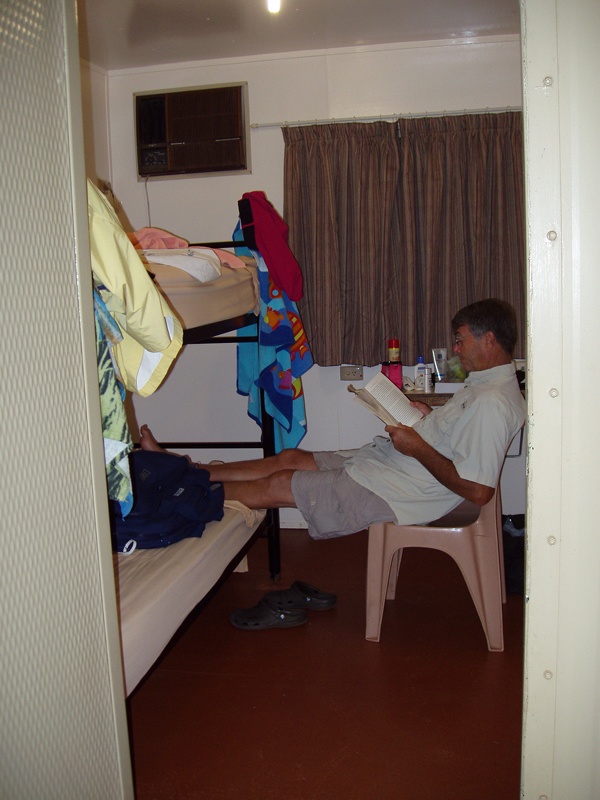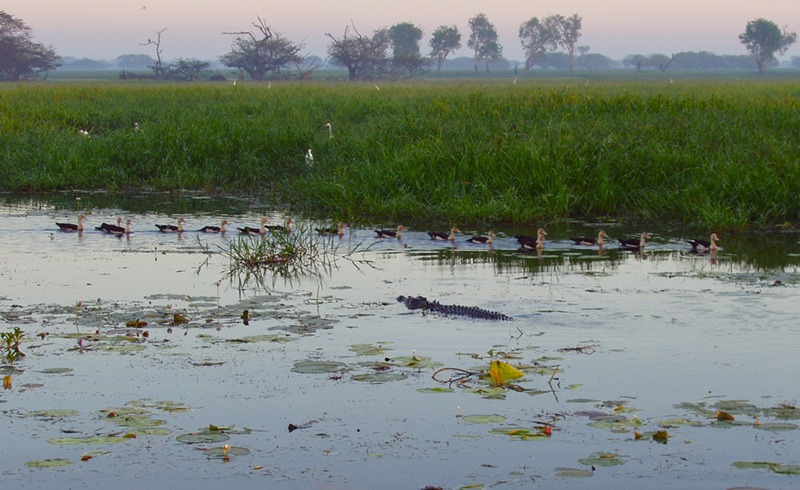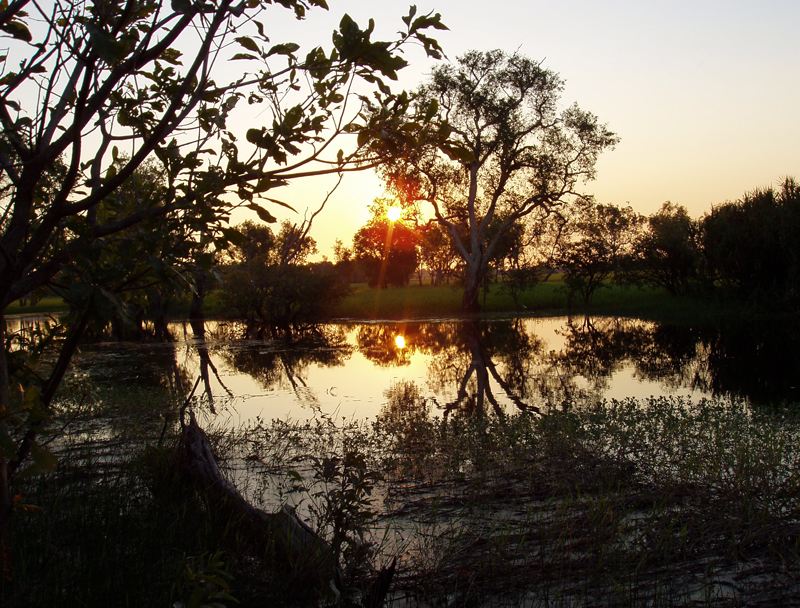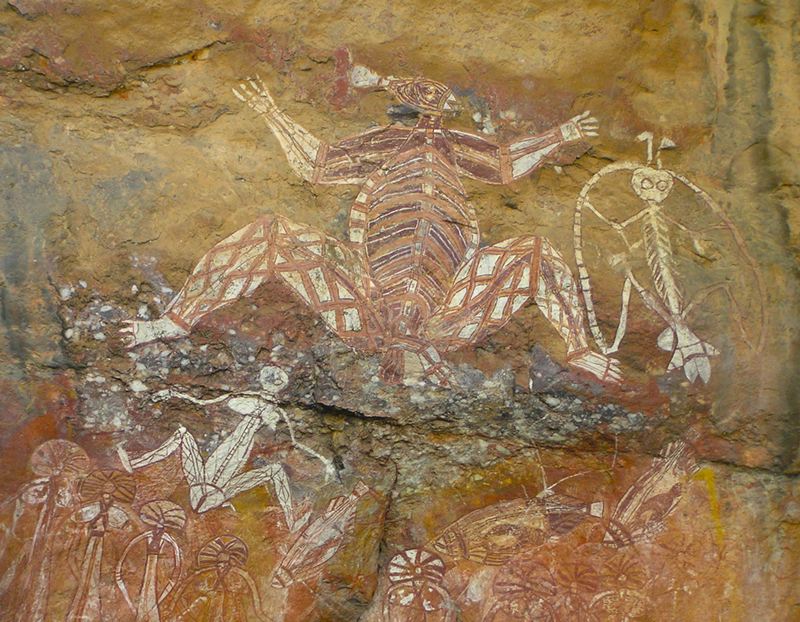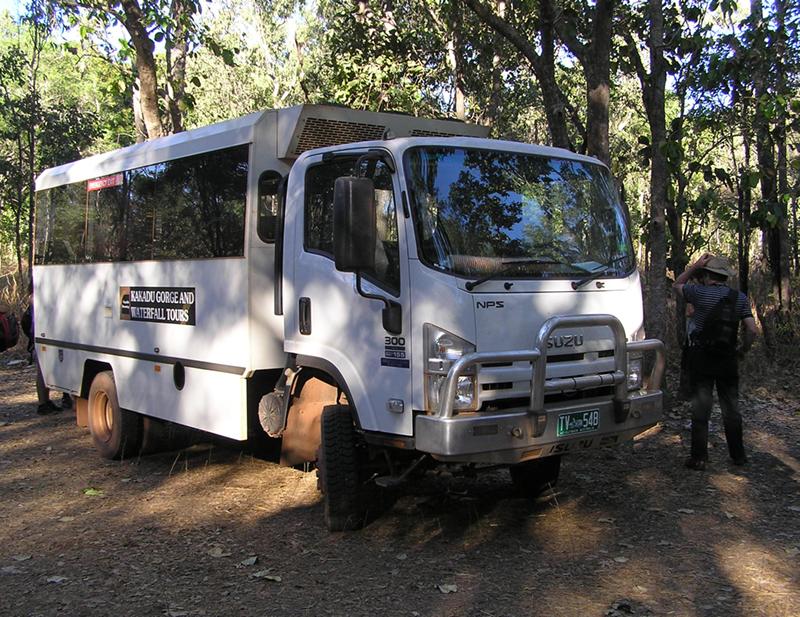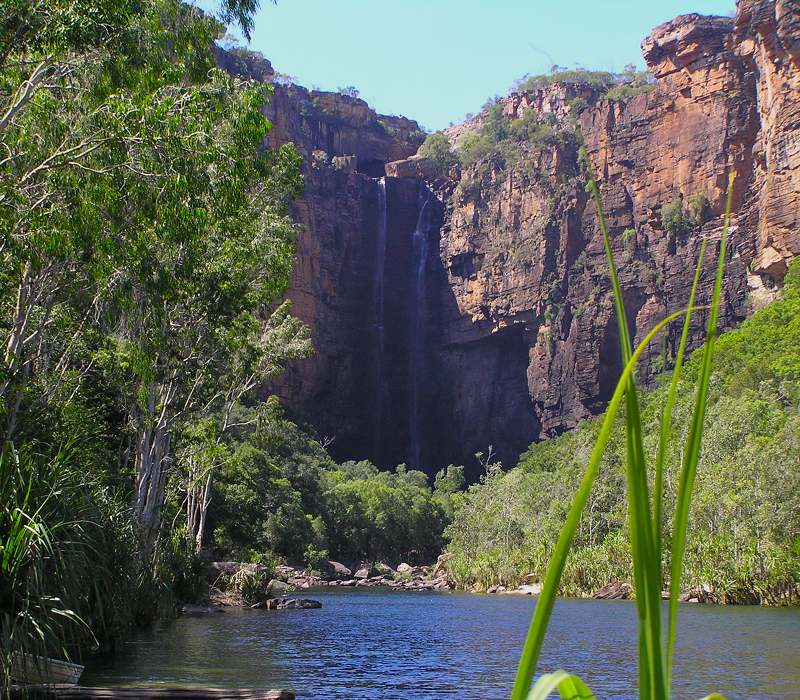Whirlwind Tour of Darwin and off to Indonesia - Tipperary Waters Marina, Darwin, Northern Territory, Australia

Harmonie
Don and Anne Myers
Fri 23 Jul 2010 08:26
|
12:26.928S 130:51.045E
Note: The 4WD truck picture has been fixed
below (picture 9).
It's July 24th, we've been in Darwin 3 1/2 weeks
and it's now time to go. What a whirlwind. A whirlwind of boat
cleaning, repair, provisioning, sightseeing, meeting new people and seeing
boater friends we haven't seen since New Zealand or Fiji or Vanuatu or New
Caledonia. There are 105 sailboats and one motorboat (Storyteller) taking
part in the Sail Indonesia rally. Everyone has gathered here from
various points east and south, but all will be pointed north starting tomorrow
morning, including us. Our first destination will be the original
spice islands. These are the islands famous for their nutmeg and
cloves back in the 1400's, 1500's and 1600's. Yes, the same ones
Christopher Columbus was looking for in 1492. They are
called the Banda Islands, and they lie 500 miles almost due north
from Darwin. It will take us four days and three nights to get there and
we are hoping for a semi-comfortable beam sail. We'll see. Our three
month sail through Indonesia promises to be magical. We are looking
forward to a new culture and gorgeous anchorages in extremely remote places
starting with Banda.
Darwin has been a delight between its
compact (80,000 people) attractive downtown filled with good shopping,
indigenous art, museums and an outdoor movie theater, and the outback to the
south. In the middle of our stay here, we took four days off
from boat work to drive down to Kakadu National Park with John and Sue.
Other than that, we've done nothing but get ready for our southeast Asia
odyssey. There has been an accelerated number of repairs to take care of
including the raw water pump for the main engine, both air conditioning pumps
and the fresh water pump. It's been a bad three weeks for pumps on
Harmonie. Maybe there's a pump virus going around? In the case
of the water pump for the engine, we got lucky and were able to order it in the
US and have it hand carried to Darwin by incoming crew for the American
boat Baraka. The air conditioning pumps had to be flown in from Brisbane
and various other bits and pieces were purchased locally and installed by the
marvelous maintenance man (who at the moment is slightly fed up with
maintenance).
Without further ado, here is our collection of
Darwin area pictures:
Picture 1 - Entering Tipperary Waters Marina
through the lock. A mighty small lock, but just big enough for Storyteller
to fit. Access to this marina is only possible when it's mid-tide or
higher. Lower than mid-tide and we'd have trouble traversing over ground
to get to deeper water. If you zoom in on our position on the map, you'll
see what I mean.
Picture 2 - Our 'budget room' at one of the
'resorts' in Kakadu National Park. We went for the budget $110/night room
because we didn't want to spring for the higher priced ($350) option. What
you see here is all there was. After hearing a woman from Norway refer to
the budget rooms as 'suitcases', we took to calling this one The
Suitcase. Two bunk beds, a chair, a tiny table and an air
conditioner. That's it. No bathroom, not even a sink. Needless
to say, we didn't spend a lot of time in The Suitcase.
Picture 3 - There are lots of these in Kakadu, and
after having spent some time there, we can see why. (photo courtesy of
John)
Picture 4 - A croc with all his ducks in a
row. We took a sunrise cruise through the Yellow Water wetlands and it was
incredible. We haven't seen wildlife like this since the Galapagos.
The place was overflowing with birds, and as you can see here, they didn't seem
to mind the patrolling crocs. The cruise was two hours and we saw at least
five or six crocs. The place was teeming with life.
Picture 5 - A big-ass croc. It was amazing
how close this guy allowed our flat, aluminum pontoon tourist boat to get to
him. Maybe he just wanted to show off his girth. (photo courtesy of
John)
Picture 6 - A white-breasted sea eagle. Also
seen during our wetlands cruise. (another John photo)
Picture 7 - Sunset over Yellow Water. We
walked back to the wetlands at sunset to see how it compared with the views at
sunrise. It compared well.
Picture 8 - Aboriginal cave drawings.
Aboriginal people live within the limits of Kakadu National Park, but they no
longer take shelter in the rock caves. It wasn't all that long ago when they did
though - in the 1950's many Aborigines worked for the cattle and buffalo
ranchers, but in the off season they returned to their rock shelters. No
one knows for certain, but the latest estimates indicate Aboriginal people have
existed in Australia for 50,000 years. The Aboriginal people did not
have a written language, so passing information down from generation to
generation was achieved through storytelling. Often, storytelling was
accompanied by drawings like those in this photo. When a story was told,
the drawing was painted on top of a previous drawing - almost
like drawing on a chalkboard except that the previous drawing wasn't
erased before the next drawing was done. The history that exists within
the layers of paint on these drawings goes back thousands of years - too far to
imagine. This particular drawing depicts the story of the Lightening
Man. (another John photo)
Picture 9 - On our fourth day in Kakadu, we booked
a trip in a four-wheel-drive vehicle to Jim Jim Falls. This is the snazzy
4WD vehicle. We decided it was a far cry from the tourist truck we sat in
the back of for the trip up the side of the volcano on the island of Tanna in
Vanuatu - this time we had no fear of falling out. The roads in this part
of Australia are interesting. Every time we made a comment, John kept
reminding us that it was only twenty years ago that the road that runs through
the center of the country from Darwin to Adelaide on the southern coast was
paved. No wonder the rest of the roads are dirt (red dirt) or classified
as 4WD, which, after riding on one such road, seemed more like something a
4-wheeler would enjoy and less something a snazzy tourist 4WD vehicle or a
classy Land Rover could handle. But handle it did. These Australians
are a hardy folk. Our tour guide was also our driver, and although he
didn't do much in the way of tour guiding, he was one heck of a driver
- getting this big thing around hairpin turns, through creek beds and
between trees on what looked more like a cow path than a 4WD 'road'.
(another John photo)
Picture 10 - The snazzy 4WD vehicle took us as far
as it could and then the rest of the trip to Jim Jim Falls was like this.
Well, half the kilometer walk was anyway. That's John picking his way
through the boulders near the end of the trail. Don and his apparently
fully healed ankle did very well in this environment.
Amazing.
Picture 11 - Jim Jim Falls from a distance.
In another few weeks the falls will dry up as the dry season winds up into full
swing. We were lucky that the wet season ran long this year, so the
falls were still falling. It wasn't until a few weeks ago that the
4WD road (cow path) opened up for traffic. Before that most of it was
under water.
Picture 12 - Back to reality. After our four
day respite in Kakadu, we returned to reality and the task of provisioning the
boat for three months in mostly Muslim Indonesia, where pork and dairy products
are hard to find and alcohol and wine nearly non-existent. I won't tell
you how many cases of Australian wine we now have on board because it's
embarrassing. Let's just say the boat has never floated quite so
low in the water as it's doing right now. Of course it doesn't help
that the freezer is completely packed with meat (do you think 7 pounds of
hamburger, 24 sausages, 7 pounds of chicken, 6 packages of bacon and gobs of
lamb chops and steaks are enough?). Ten bottles of cranberry juice
and 15 liters of orange juice might be contributing to our low lying situation
too. Oh and in case you were wondering, that's Don's three month supply of
coffee beans sitting next to the computer on the table. Do you think he'll
make it to Singapore??
That's the end of your (and our) fast tour of
Darwin. We wouldn't mind a little more time here, but at the same time we
are ready to move on. We are excited to get back into the island
life - even if it means three months without a marina, TV, radio, decent
internet and pork products.
We'll update the blog every day during our trip to
Banda starting on Sunday (your Saturday).
Anne
|

